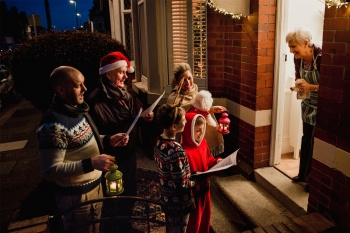 Although Halloween has come and gone, there is still time to participate in the Scandinavian Christmas version of trick-or-treating known as julebukking. Julebukk translates to “Yule goat” and was brought to the United States by Norwegian and German immigrants. It originated in Norway during Viking times to honor the god Thor, as he would often travel in a goat-drawn chariot. As part of the pagan celebrations, a person would carry a goat head, dress in goatskin, and burst in on the party.
Although Halloween has come and gone, there is still time to participate in the Scandinavian Christmas version of trick-or-treating known as julebukking. Julebukk translates to “Yule goat” and was brought to the United States by Norwegian and German immigrants. It originated in Norway during Viking times to honor the god Thor, as he would often travel in a goat-drawn chariot. As part of the pagan celebrations, a person would carry a goat head, dress in goatskin, and burst in on the party.
Over the years julebukking has taken on a few different forms. It usually occurs between Christmas and New Year’s. In one of the more common forms, julebukkers would dress in masks, hats, costumes, etc. and travel from door to door making their friends and neighbors guess who was behind the mask. They often would disguise their voices to make it even more difficult. Once their identities were revealed, they would be gifted candy, cookies, or holiday treats and continue to the next house. In another version from the early 20th century, julebukking involved dressing up with a group of friends, going house to house, and singing in exchange for alcohol. It’s said that this version died out due to Prohibition. A more festive form of julebukking includes singing Christmas songs from door to door and is one of the more common forms of julebukking in present day.
Although some say julebukking ended in their towns around the mid-20th century, others boast that it continues to this day. In fact, it is still observed in some rural Midwest towns such as Stoughton, WI, Decorah, IA, and Spring Grove, MN. What these places have in common is a large population of people of Scandinavian descent.
If you’ve never tried julebukking or want to spruce up your yearly Christmas caroling, it is great fun and helps tie us to our ancestral traditions.
